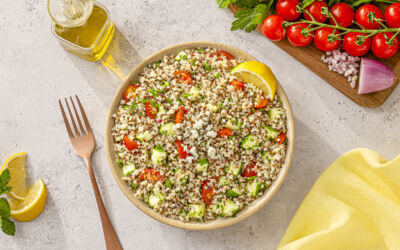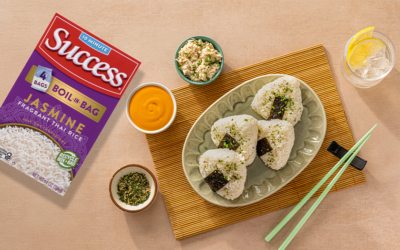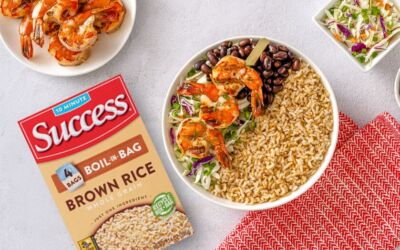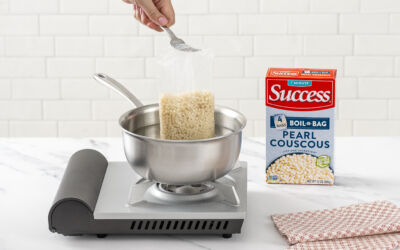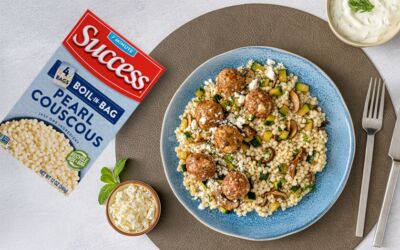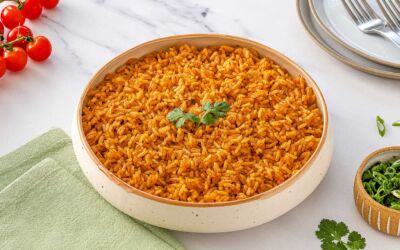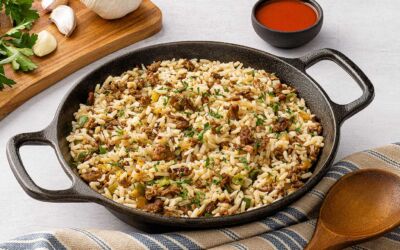A season of flexible routines and relaxed moods, summer is also a time to keep cooking to a minimum with cold lunch ideas that satisfy. Dishes that refresh and revive, these rely on a bounty of seasonal ingredients and pantry staples to come together in minutes. Ideal...
From Fridge to Fork: Easy Cold Lunch Ideas for the Summer
A season of flexible routines and relaxed moods, summer is also a time to keep cooking to a minimum with cold lunch ideas that satisfy. Dishes that refresh and revive, these rely on a bounty of seasonal ingredients and pantry staples to come together in minutes. Ideal at work or at camp, for beach days, […]
How to Season Quinoa: From Basic to Bold
As versatile as rice, and as simple to cook as pasta, Success® boil-in-bag quinoa is the dark horse of the pantry, ready to wow when given the chance! Knowing how to season quinoa can take this ingredient from nutty and hearty to bold and thrilling. It’s also...
5 Creative Seaweed and Rice Recipes to Try at Home
Light, fresh and savory, seaweed and rice recipes are a welcome departure from your usual menu. Ideal for warm days, busy days, or days when you simply crave something exceptional, these dishes go beyond sushi and can be easily tackled at home. Rich in nutrients,...
11 Shrimp Recipes with Rice You’ll Want to Make Every Week
Looking for a one-two punch that gets delicious dinners on the table in record time? A boon to harried cooks everywhere, shrimp recipes with rice are easy to prepare, quick-cooking and are as versatile as can be! Whether you’re craving Mexican or Thai food, Indian...
How to Cook Pearl Couscous Like a Pro
Quick-cooking carbs can balance out any dish—from hearty breakfast tacos to elegant desserts! Since you already adore rice and have a soft spot for quinoa, it’s time to discover pearl couscous and everything it has to offer. Tender and versatile,...
Easy Quinoa Recipes with Chicken For Busy Days
When weeknight cooking starts to feel routine, switch things up with a fresh crop of interesting ingredients! If chicken is your go-to protein, quinoa recipes with chicken will feel novel and new, enticing and intriguing — all without putting any undue stress on the...
13 Easy Mediterranean Recipes to Transport You to the Coast
Fresh and bright, light and zippy, easy Mediterranean recipes are a direct route to dinnertime bliss. Packed with produce and light proteins, they make the most of warm-weather harvests, fragrant herbs, whole grains, and quick-cooking pantry staples. Plus, they’re...
Simple Chicken Rice Bowl Recipes for Any Meal
Begin with quality rice and tender morsels of chicken, and suddenly you’ll have ideas galore for how to make mealtime memorable! Endlessly adaptable, delicious and budget friendly, chicken rice bowl recipes are also easy to make, making them a popular option for...
How to Season Jasmine Rice for Maximum Flavor
Naturally light and fragrant, Jasmine rice is treasured across the globe. A grain that’s native to Southeast Asia, it nonetheless transcends borders, elevating dishes from all parts of the world. Whether you use herbs, broth, coconut milk or spices, learning how to...
Sausage and Rice Recipes for Every Taste
Craving a meal that’s comforting, complex, great for diners of all ages and that’s gloriously simple to prep without dirtying a stack of dishes? Then it’s time to make friends with sausage and rice recipes! Complete meals (that are often one pot!), sausage and rice...
How to Cook Basmati Rice on the Stove: Perfect Fluffy Rice Every Time
Dinner dilemmas become a thing of the past once you learn how to cook basmati rice on the stove! A key building block in a diverse number of delicious dishes, perfectly fluffy, aromatic basmati rice is an indispensable kitchen workhorse that can be used from morning...
Simple Ground Beef and Rice Recipes for Every Occasion
As every home cook knows, ground beef is an endlessly adaptable kitchen essential. Relatively inexpensive, packed with protein, quick-cooking and tempting in a vast number of recipes — from tacos to soups, casseroles, pastas, meat pies and more! — ground...


